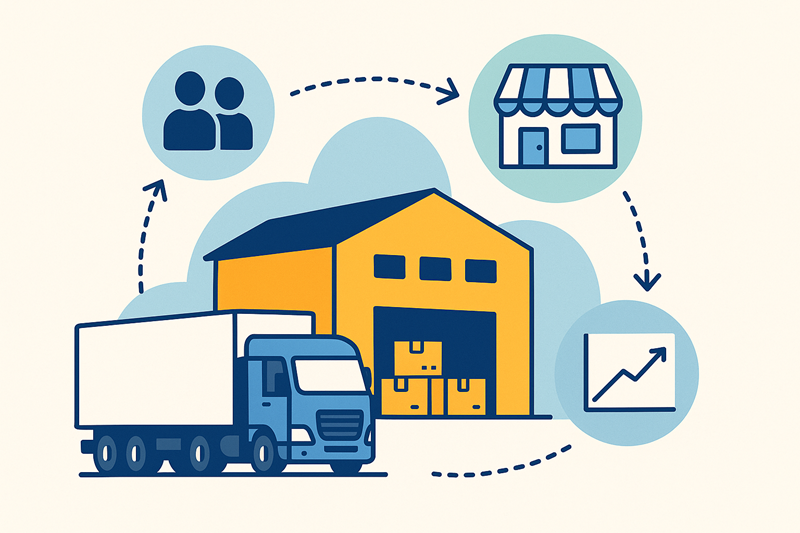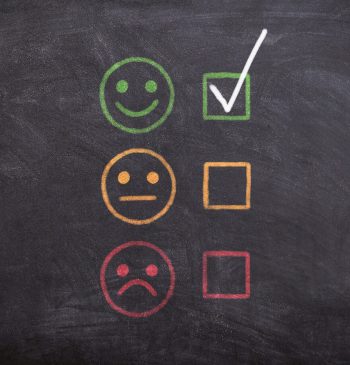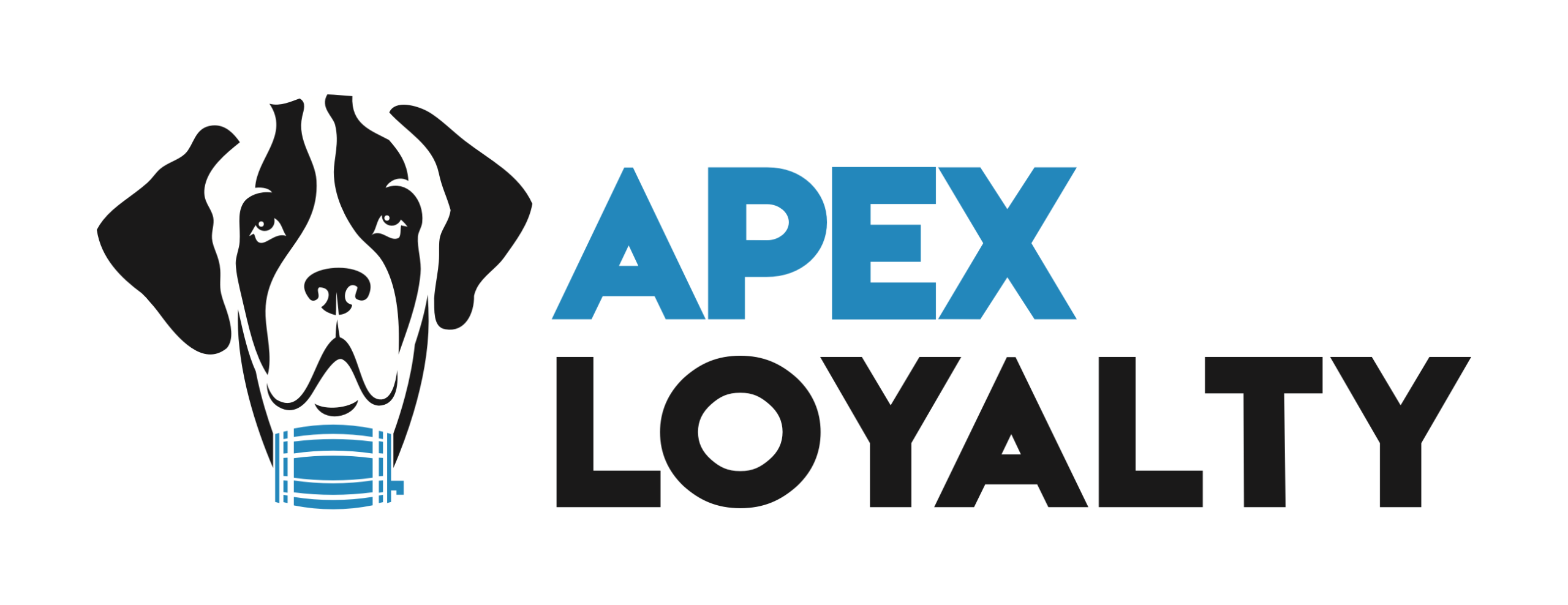28 Oct

Top 5 Challenges in Indirect B2B Sales Channels and How to Turn Them into Commercial Activation
Managing orders across indirect B2B sales channels has always been complex. Especially for manufacturers and distributors operating through multi-tier trade networks.
Even the world’s leading brands face operational friction, fragmented communication, and missed commercial opportunities.
The real challenge lies not in selling to these channels, but in activating them. Motivating field reps, distributors, and points of sale to sell more, stock more, and stay loyal in a fast-changing market.
In manufacturing and distribution, where thousands of independent outlets, retailers, and service points make up the commercial ecosystem, visibility and engagement often depend on how efficiently brands can connect digital and physical operations.
In most indirect B2B sales networks, the pain converges around three major areas:
- Due to a vast B2B customer universe, direct physical coverage is inefficient and costly.
- Effective engagement between B2B customers — such as distributors, retailers, points of sale, or HoReCa partners (depending on your industry and channel structure) — is a key driver of success but often limited to field reps.
- Digital commerce solutions are exponentially increasing the ease of doing business for both buyers and sellers.
Yet, many companies still struggle to decide where to start or which platform can help them build scalable B2B customer engagement.
Let’s explore the five most common challenges brands, distributors, and wholesalers face in traditional trade — meaning every indirect B2B network that still operates offline — and how digitization can turn them into measurable growth.
1. Expensive Field Management
The Challenge
Direct, field-rep-driven coverage is costly and inefficient.
In large B2B ecosystems, where thousands of stores, pharmacies, or service points exist, every physical visit adds cost and complexity.
Rep dependency limits scalability, while coverage remains inconsistent.
Many brands invest heavily in field operations, yet a significant portion of their outlets remain unseen.
The result? Missed orders, delayed promotions, and high cost-to-serve ratios.
The Solution
Field management is being redefined by the blend of physical presence and digital enablement.
Rather than relying solely on in-person coverage, forward-thinking brands are equipping their partners to order, engage, and participate in campaigns through digital B2B commerce solutions (what the industry often calls B2B eCommerce platforms).
When digital ordering and incentive management modules work together, every partner becomes a self-service touchpoint, able to access products, promotions, and performance data anytime, from anywhere.
This doesn’t mean replacing field reps.
It means scaling their impact, enabling them to focus on strategic accounts, guided by insights from digital interactions.
Digitized workflows reduce operational costs, speed up campaign execution, and expand commercial reach. All while making field teams more targeted and effective than ever before.
2. Ineffective Partner Engagement
The Challenge
Engagement still relies heavily on human interaction across indirect B2B channels. Store visits, phone calls, or printed campaign sheets.
While these methods build relationships, they don’t scale. Thousands of small outlets and secondary partners remain out of reach, disconnected from the brand’s daily rhythm.
As a result, brand visibility weakens at the shelf, new campaigns fail to reach the long tail, and valuable commercial data stays trapped in fragmented systems or in people’s heads.
Even for global enterprises, partner engagement often means a few flagship distributors are highly informed, while hundreds of smaller partners operate in isolation.
The Solution
Effective partner engagement starts with access and awareness.
When every partner (regardless of size, geography, or tier) can see promotions, product updates, and incentives in real time, engagement becomes an everyday habit, not a once-a-quarter conversation.
Leading brands are now investing in digital engagement layers that complement their existing field and marketing operations.
These layers often combine:
- Targeted communication (news, product releases, price changes)
- Gamified participation (missions, challenges, or digital check-ins)
- Incentive automation (points, rewards, or dynamic goals)
- Learning modules (micro-training to strengthen product knowledge)
By making engagement measurable and accessible through digital tools, brands create a two-way connection. One where partners don’t just receive information, but act on it.
3. Unfair Promotion Distribution
The Challenge
Most brands run trade promotions with good intentions but limited precision.
When every distributor or store receives the same offer, it may look fair on paper, yet it produces the opposite effect in practice.
Smaller outlets can’t reach high sales thresholds, so they disengage.
Meanwhile, large partners easily surpass those targets and collect unnecessary discounts, eating into profit margins.
Without segmentation, trade promotions become inefficient incentives. Rewarding volume instead of growth potential.
The consequence? Value leakage, reduced ROI, and inconsistent brand activation across the channel.
The Solution
Fairness in trade promotion isn’t about equality; it’s about relevance.
Digital transformation allows brands to tailor promotions, pricing, and goals based on the characteristics of each partner: size, location, performance, or purchasing pattern.
With dynamic segmentation, every outlet sees targets that are achievable and motivating, not arbitrary.
Modern B2B commerce systems now enable:
- Segment-specific pricing and discount tiers
- Personalized sales targets linked to incentives
- Automated goal tracking and real-time eligibility checks
- Reward structures that encourage sustainable performance
When promotions align with partner capability, participation rises, incremental sales increase, and brand trust deepens.
4. Limited Visibility & KPIs
The Challenge
Performance data often lives in spreadsheets across indirect B2B channels or worse, in people’s memory.
When sales, marketing, and distribution teams operate on disconnected systems, it becomes nearly impossible to understand what’s really driving growth.
- Who achieved their sales targets?
- Which promotions delivered incremental revenue?
- How are incentives impacting partner behavior?
Without a unified source of truth, decisions are made on assumptions rather than insights. Campaign ROI remains unclear, and course corrections come too late.
The absence of visibility doesn’t just limit analysis. It limits agility.
The Solution
Data is the foundation of scalable trade performance.
To understand and influence partner behavior, brands need real-time visibility across every transaction, campaign, and engagement touchpoint.
Modern B2B commerce systems make this possible by:
- Capturing transactional data (orders, values, frequency)
- Linking incentive data (target achievement, reward redemption)
- Measuring engagement data (campaign participation, activity levels)
- Visualizing performance through real-time dashboards
This integrated view helps commercial teams see what’s working, fix what isn’t, and replicate success faster.
When visibility improves, accountability follows and every campaign becomes an opportunity to learn and optimize.
5. Lack of Brand Advocacy
The Challenge
Your brand story rarely reaches the end of the channel intact.
When field reps are the sole messengers, product knowledge and campaign details are shared inconsistently or not at all.
Retailers, distributors, or sales points may stock your products, but that doesn’t mean they understand your brand.
Without structured education or two-way communication, partners become order-takers, not brand advocates.
This weakens the connection between manufacturer and market.
Promotions may drive short-term sales, but long-term loyalty, the kind built on trust and knowledge, remains out of reach.
The Solution
Brand advocacy begins with education and empowerment.
Partners who understand your brand’s products, values, and goals are far more likely to recommend, prioritize, and promote them.
Forward-looking organizations are integrating training and brand communication into their B2B engagement strategy, often within the same digital platforms where ordering and incentives already happen.
Micro-learning modules, quizzes, and certification paths transform product knowledge into a measurable advantage.
When combined with reward systems, education becomes not just informative but motivating.
Partners learn, engage, and get recognized for their expertise, turning your channel into an extended brand community.
The Unified Path Forward: Loyalty-Driven B2B Digital Commerce
Digitizing traditional trade isn’t just about moving your catalog online.
It’s about transforming every commercial interaction from orders to incentives into measurable, repeatable growth.
When B2B commerce, promotions, and loyalty work in isolation, value gets lost between systems, sales regions, and distribution tiers.
A unified approach brings them together, aligning your sales, marketing, and channel partners around the same data, goals, and results.
Modern brands are now realizing that digital commerce is not the endgame. What drives real impact is the ability to connect ordering with engagement, and engagement with outcomes.
That’s where loyalty-driven B2B digital commerce makes the difference.
By combining ordering, promotion automation, and incentive management within one experience, brands can:
- Scale their channel reach without scaling their field cost,
- Turn promotions into measurable growth programs, and
- Build stronger, more loyal partner communities.
This is the new reality of traditional trade: measurable, connected, and human.
Apex Loyalty: Enabling Measurable Commercial Activation Across Distribution Networks
Apex Loyalty empowers global brands to digitize their trade networks through a unified platform that blends:
- Digital Ordering: Seamless, B2C-like experience for distributors, wholesalers, and points of sale.
- Trade Promotions: Automate personalized campaigns and dynamic discounting directly within the ordering journey.
- Loyalty & Incentives: Reward engagement and performance through missions, targets, and gamified experiences.
- Analytics & Insights: Track every transaction, campaign, and behavior in real time.
Every order becomes an opportunity to engage.
Every campaign becomes a data point to learn from.
And every partner becomes part of your growth engine.
Related Post
About Apex Loyalty
Resources



